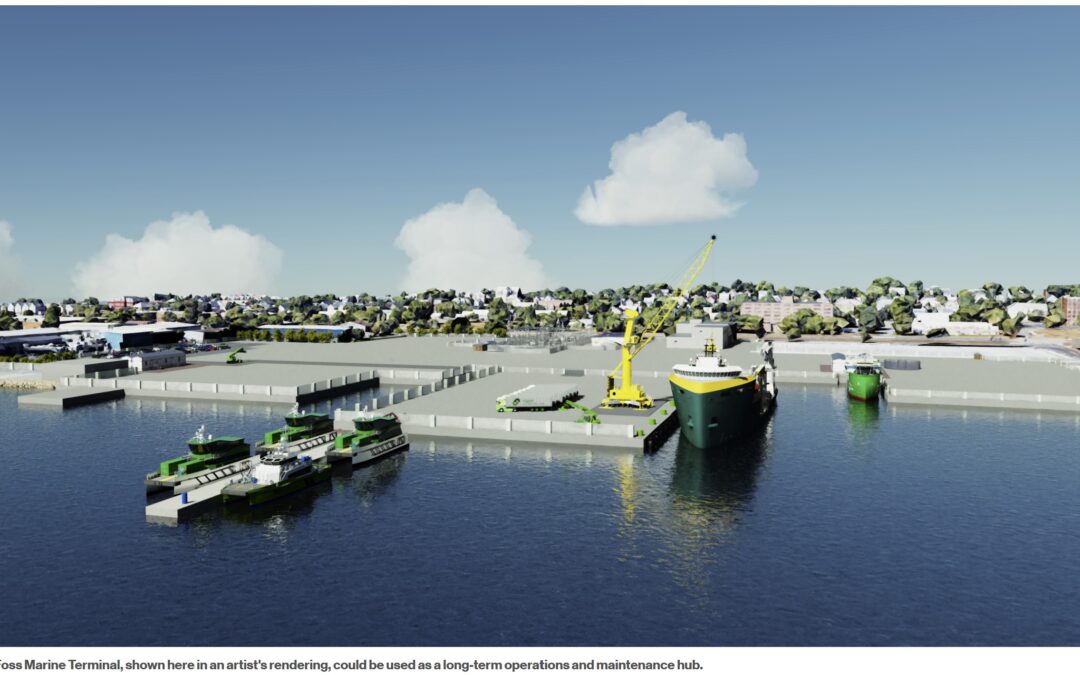New Bedford is still part of Vineyard Wind 2’s plan, however in a different capacity — as an operations and maintenance hub at the New Bedford Foss Marine Terminal. While staging and construction last only one to two years, operations and maintenance work is meant to last as long as the project, or up to 30 years.
Andrew Saunders, president of the New Bedford Foss Marine Terminal, said Vineyard Wind 2’s proposal for an operations hub in New Bedford would be a “huge economic benefit.” He said Foss would employ 15 to 20 people at its terminal, but that its tenants (contracted by Vineyard Wind 2) would employ hundreds.
Foss plans to build a 30,000 square-foot warehouse for the project to store important components and supplies; some would go in a climate controlled portion (for example, sensitive parts for the nacelle — the turbine’s generator).
New England Wind 1, like Vineyard Wind 2, plans to use Salem as its marshaling port for construction.
Similarly, the project proposes an operations and maintenance hub in New Bedford at Shoreline Offshore, a company owned by Quinn Fisheries.
Avangrid also announced plans to build a manufacturing facility in the city for cranes that can lift heavy offshore wind equipment. The company is partnering with Danish manufacturer Liftra to build a “first-in-the-nation” crane manufacturing facility at South Coast Mills in the South End.
Finally, Avangrid also plans to use the New Bedford Foss Marine Terminal to operate its crew transfer vessels (CTVs) and service operation vessels (SOVs). The former are about 60 to 100 feet long and are used for day trips, but SOVs can scale at 250 to 300 feet and support offshore trips that last one to two weeks.
SouthCoast Wind is the only developer that has committed to establishing both operations and maintenance and staging of its project in New Bedford. That commitment, however, is contingent on Massachusetts agreeing to purchase at least half of the project’s 1,200 megawatts.

